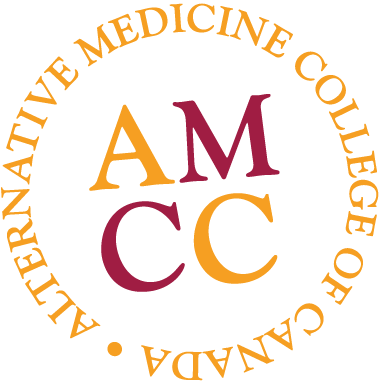Here is a subject which is not really topical any more, but which corresponds well to our topic of RAIN. Indeed, governments have made several agreements to reduce their pollutant emissions, such as between the United States and Canada, and suddenly reduce the most acidic ones.
In terms of chemical molecules
If you’re like me and scientific formulas give you pimples, take a look at this scientific definition of acid rain anyway, to better understand the next few paragraphs:
“This acidification is due to the presence in the atmosphere of gases capable of dissolving in water, forming acidic species. These are essentially oxides of sulfur (SO2 and SO3) and nitrogen (NO and NO2). These pollutants react in the atmosphere with oxygen and water to form sulfurous acid H2SO3 and nitric acid HNO3, respectively. Other acids may be involved to a lesser extent: hydrochloric acid, hydrofluoric acid, ammonium, formic acid, acetic acid … “(wikipedia)
What Consequences on Health?
What does it matter if the rains are acidic or not? I’ll give you some examples from our courses at AMCC to give you an idea of the power of acidity in acid rain:
Lead, which is found in batteries, sometimes in paint, in automobile gases … It easily enters the food chain because plants tolerate high concentrations of metal and it remains in the soil for a long time; Well imagine it can be made soluble by acid rain – and has even been found in fruit years after it was no longer used!
Another example:
acid rain makes aluminum soluble, which allows it to spread more easily in the environment. Several research projects have studied its effect on different ecosystems over the past decade.
Even without being acidic, rain has the power to transfer xenoestrogens (or estrogen from a foreign source), chemical fertilizers, pesticides, insecticides and fungicides into larger bodies of water which, along with other drugs that are flushed down the toilet. They thus become a source of pollution of drinking water because they are not completely filtered by municipal wastewater treatment plants.
Acidic Rain and Calcium
Although birds and mammals are not directly affected by water acidification, they are indirectly affected by changes in the quality and quantity of their food supply. In Scotland, for example, otters are rather scarce around streams and acid rivers because their main supply, fish, is reduced.
Additionally, calcium is an essential building block for mammals and birds and an adequate dietary supply is crucial for them during breeding (birds need calcium for proper eggshell formation and for the skeletal growth of their offspring. ). Female mammals need it for the skeletal development of their fetuses. Finally, many invertebrate species, for example molluscs and crustaceans, have calcium requirements which can no longer be satisfied above a certain pH threshold. They are among the first to disappear in the event of acidification of marshy lands or fresh or marine waters.
What Is Done To Prevent?
You probably know the expression Better safe than sorry? Well, this is a somewhat critical situation where the prevention stage seems to be over and nothing but cure can resolve the illnesses that follow.
I quote you the course of Vital Hygiene on this subject:
Canada has implemented an Acid Rain Control Program that aims to reduce acid fallout from indoor sources to levels that can be tolerated by the environment. However, simply halving sulfur anhydride would cost almost $ 500 million per year. Millions more would be needed to reduce the amount of nitrogen oxide coming from cars and industries. Additionally, acid rain is a continental phenomenon and Canada’s problem will not be resolved until the United States takes similar steps to control the problem.
At the international level, things are moving in the face of the growing dangers of global warming. This is reflected in the organization of the 2015 Paris Conference on Climate Change (COP21). The objectives of the conference were, according to the organizers, “to reach, for the first time, a universal and binding agreement to effectively combat climate change and accelerate the transition to resilient and low-carbon societies and economies”. Despite the subsequent withdrawal of the United States by the Trump administration and several criticisms of its unconstrained nature, the Paris Climate Agreement (resulting from COP21) was qualified as historic because it was unanimously approved by the 195 participating countries. The agreement sets the goal of limiting global warming to less than 2 ° C, by targeting 1.5 ° C. It entered into force on November 4, 2016. It remains to be seen whether the parliaments of each country will henceforth put all these fine intentions into action.
Recent Data?
I went to see if we had more recent data for studies and international agreements, but it seems that our AMCC courses are very up to date: there has been no change since 2016!
Some statistics from 2017 (!)
Between 1990 and 2017, sulfur dioxide emissions in Canada and the United States decreased by 69% and 88%, respectively
Between 2000 and 2017, nitrogen dioxide emissions fell 59% in Canada and 61% in the United States, in the transboundary ozone zone.
Between 1990 and 2017, significant declines in wet sulphate and nitrate deposition (the main indicators of acid deposition) were recorded in eastern Canada and the United States.
Annual ozone concentrations in the border region between Canada and the United States declined between 1995 and 2017.
The fact remains that controlling air pollution is a huge challenge, because the waste in question comes from our primary industries and our energy sources, in particular those which supply all our means of transport. Which partly explains why the Trump administration wanted to withdraw from the deal: not quite the type to cut profits and jobs to help the environmental cause.
If you enjoyed this article you may also like:
Rhus-Tox and Friends: Sensitive to Rain




Leave a Reply